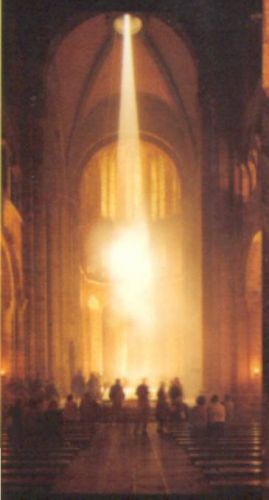 After that big Pew study came out, Catholic leaders wondered why their members are leaving the faith. Inside Catholic devoted a whole forum to the issue, while Catholic intellectuals such as Thomas Reese, S.J. commented about it.
Catholic leaders often think that the media gives their faith short shrift, so it was refreshing to see The Dallas Morning News run a local version of this national story. Special correspondent Jean Nash Johnson found, intriguingly, that the Dallas archdiocese is welcoming an abundance, not a dearth, of Catholic converts.
After that big Pew study came out, Catholic leaders wondered why their members are leaving the faith. Inside Catholic devoted a whole forum to the issue, while Catholic intellectuals such as Thomas Reese, S.J. commented about it.
Catholic leaders often think that the media gives their faith short shrift, so it was refreshing to see The Dallas Morning News run a local version of this national story. Special correspondent Jean Nash Johnson found, intriguingly, that the Dallas archdiocese is welcoming an abundance, not a dearth, of Catholic converts.
The first few paragraphs of Johnson's story were first rate. She led with the story of Matthew Parks, a convert whose life story sounds like it should be made into a TV movie on EWTN or would have been featured on Bishop Sheen's show 50 years ago:
"I don't want to put too much expectation on the event, but next to becoming sober, it will probably be the most exponential event of my life," Mr. Parks said. "It's really going to be an awesome experience. It's overwhelming to think about, to finally consume the Body of Christ."
Mr. Parks moved to Dallas a year ago after what he described as a "long problem with drug abuse," and began study of the Catholic faith after joining initiates at St. Mark. The initiation period is nine months to a year and culminates at Easter.
Parks' story had many of the elements of a Catholic morality tale: the lost sheep who through his dissolution comes to Christ and yearns to partake of the Body and the Blood. Parks is the real deal. To her credit, Johnson featured him.
(My lone quibble, and readers have criticized me for this, is that I wanted to know more details about Parks' story. What drugs was he he abusing? What brought him to the Catholic Church? What turned his life around?)
Johnson's story had more than a strong narrative. It also put the Dallas archdiocese's situation in a national context:
The Dallas convert count does appear to be significant. The Archdiocese of Detroit, for example, lists 589 catechumens and 497 from other Christian faiths receiving Communion; an additional 289 baptized Catholics are receiving sacraments.
The rise in conversions brings good news to the Dallas diocese after a recent study of religion in America showing that Catholicism has had the largest drop attributed to change of religion. Nearly one in three Americans were brought up Catholic; fewer than one in four now list Catholic as their religious affiliation, the Pew Forum's U.S. Religious Landscape Survey showed.
The Pew report has valid points. It does not apply to the experience in Dallas," said the Rev. Kevin Joseph Farrell, bishop of the Diocese of Dallas. "When I was in the Northeast, parishes were closing. The South, Southwest and West have the fastest-growing [Catholic] populations. Not just because of immigrants coming from the south who are already Catholic. Many are people who are returning to the church and folks moving here from the Northeast. We have a wave of immigrants and a wave of migrants."
The three paragraphs were impressive: full of local and national statistics as well as regional analysis. Bishop Farrell's quotes were particularly informative. Rare is the time that sources provide regional breakdowns of trends. Again, to her credit, Johnson got this illuminating quote.
At this point in the story, readers were hooked. Alas, Johnson let them down a bit.
She failed to pin point why the Dallas archdiocese has gotten so many converts. Yes, Bishop Farrell's quotes suggest that the archdiocese is simply the recipient of favorable trends. Is that true? Careful readers, and certainly Catholic leaders, will wonder if the archdiocese is finding ways to reach potential converts. In other words, the archdiocese might be pro active rather than passive or a combination of the two.
The flaw isn't a big deal. Johnson's story overall was interesting and well executed.
